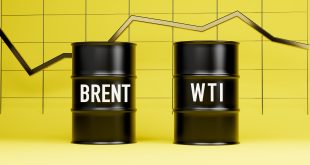In April, the persistent downturn in euro zone manufacturing activity intensified due to weakening demand, despite factories slashing prices. This compelled businesses to further trim their workforce, according to a survey released on Thursday.
The final euro zone Manufacturing Purchasing Managers’ Index (PMI) by HCOB, compiled by S&P Global, dropped to 45.7 in April from March’s 46.1, remaining below the growth threshold of 50 for the 22nd consecutive month. However, it marginally exceeded the preliminary estimate of 45.6.
The index measuring output, which influences a composite PMI scheduled for Monday and is considered a reliable indicator of economic well-being, inched up from 47.1 in March to 47.3, aligning with the flash estimate.
Despite the bloc’s economy showing signs of recovery in the last quarter, expanding by 0.3% quarter-on-quarter in January-March, as indicated by official data on Tuesday, the manufacturing sector appears to be grappling with persistent challenges.
The new orders index, which has remained below 50 since May 2022, dropped to a four-month low of 44.1 from 46.0, indicating no immediate turnaround for manufacturers.
Furthermore, factories depleted their inventories of both purchased and final goods while reducing their workforce for the eleventh consecutive month.
Despite manufacturers reducing prices again, contributing to the European Central Bank’s widely expected move to lower borrowing costs in June as inflation eases, the sector’s woes persist.
Euro zone inflation remained steady at 2.4% in April, as predicted, but a key indicator of underlying price pressures slowed, according to data released on Tuesday.
 Noor Trends News, Technical Analysis, Educational Tools and Recommendations
Noor Trends News, Technical Analysis, Educational Tools and Recommendations





